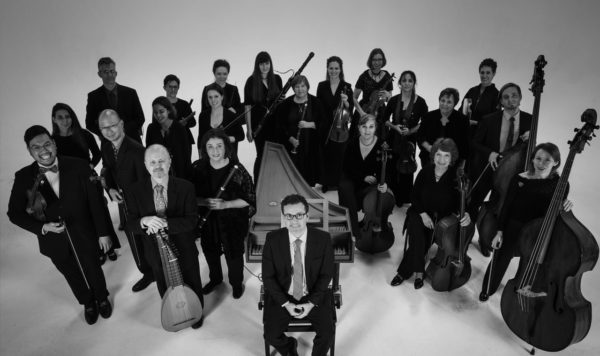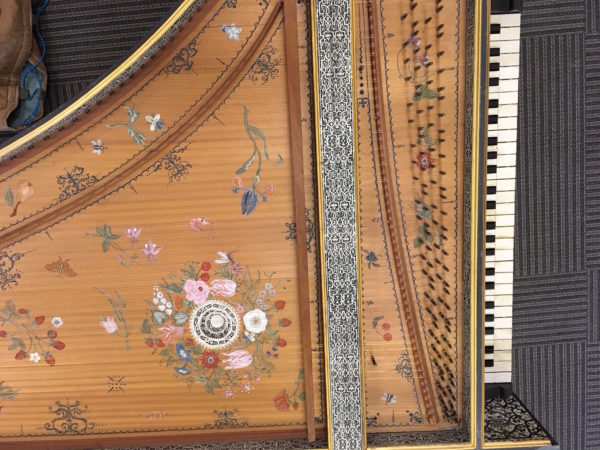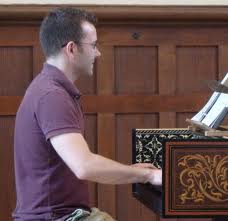Adam Pearl, Harpsichord
joined Tempesta di Mare in 2004
***
How did you start to play the harpsichord? What drew you to the instrument?

During my undergraduate degree in piano performance, we had to take a four semester series of keyboard literature. Keyboard Lit I was baroque music, and it was taught on harpsichord. This was my first time ever playing one, and I gradually became more and more drawn to it – the repertoire, the feel of the instrument, the sound – and I found I had a knack for it. I took some minor lessons and a course in playing continuo, and I loved the sense of freedom – both in interpreting repertoire and improvising on a bass line. When it came time to audition for a master’s degree, I decided this was the right course for me.
Tell us more about the harpsichord itself—are there different types? What is the history of the instrument?
Maybe I’ll start by highlighting the differences between harpsichord and piano. The harpsichord makes its sound by plucking each string with a plectrum (made out of bird quill) where the piano strikes the strings with felt-covered hammers. For this reason, the harpsichord doesn’t really have variation in dynamics: I can press a key gently, or strike it firmly, and the volume will be the same. So the expressive power of the harpsichord comes not from dynamics, but from varying touch, articulation and timing in an infinite number of ways. Harpsichords do not have a sustain pedal, so the player must hold down the keys themselves in order to let the sound continue to ring. It is also a rather delicate instrument – it takes very little pressure to play a note, so the kind of force used in piano playing can’t be used.

The harpsichord flourished from the 16th through the 18th centuries, and there are many different types. They come in several shapes and sizes – some shaped like a skinny grand piano, some rectangular, some triangular. Some have one keyboard, some have two. They can have from one to three sets of strings, sometimes even more. The various countries of Europe each had traditions of harpsichord building which influenced how the instruments sounded. So Italian, French, Flemish, English and German instruments all have different tonal qualities.
Tell us about your personal instrument. Where is it from? Who built it? What made you fall in love with it?
My instrument is based on a German instrument – a Gräbner from 1722. John Phillips in Berkeley, CA built it for me about 2 years ago. It’s a rather large instrument with a distinctly German sound. To me, German instruments tend to have a very clear sound, with a very strong fundamental pitch – as opposed to French instruments, which have more upper partials present in the sound, giving it a more “zingy” or glassy tone. The clarity of the German instruments is really ideal for the counterpoint of Bach.
How did you choose Bach’s Goldberg Variations for your upcoming recital in March 2018?

In all honesty, I never thought I would learn the Goldberg Variations. It’s so long, and so difficult! But about two years ago, one of the musicology professors at Peabody asked if I would be interested in giving a performance as part of a year long Goldberg project including a lecture and performances on piano, organ, harpsichord and a string trio. I accepted the challenge… and thus began a long (and I mean long!) process of learning the piece. It has been incredibly rewarding to work on such a masterpiece, encountering challenges – musical, technical, mental, even physical – I hadn’t dealt with before. I had a few other performances of the piece lined up for this spring, so it seemed like a logical choice. It’s pretty exhausting to perform, however, so we’ll see how doing it three nights in a row goes! Regardless, I’m happy to have this piece in my repertoire – it’s a rather humbling endeavor, but I’m excited to continue to improve and evolve with this music for as long as I can play.
